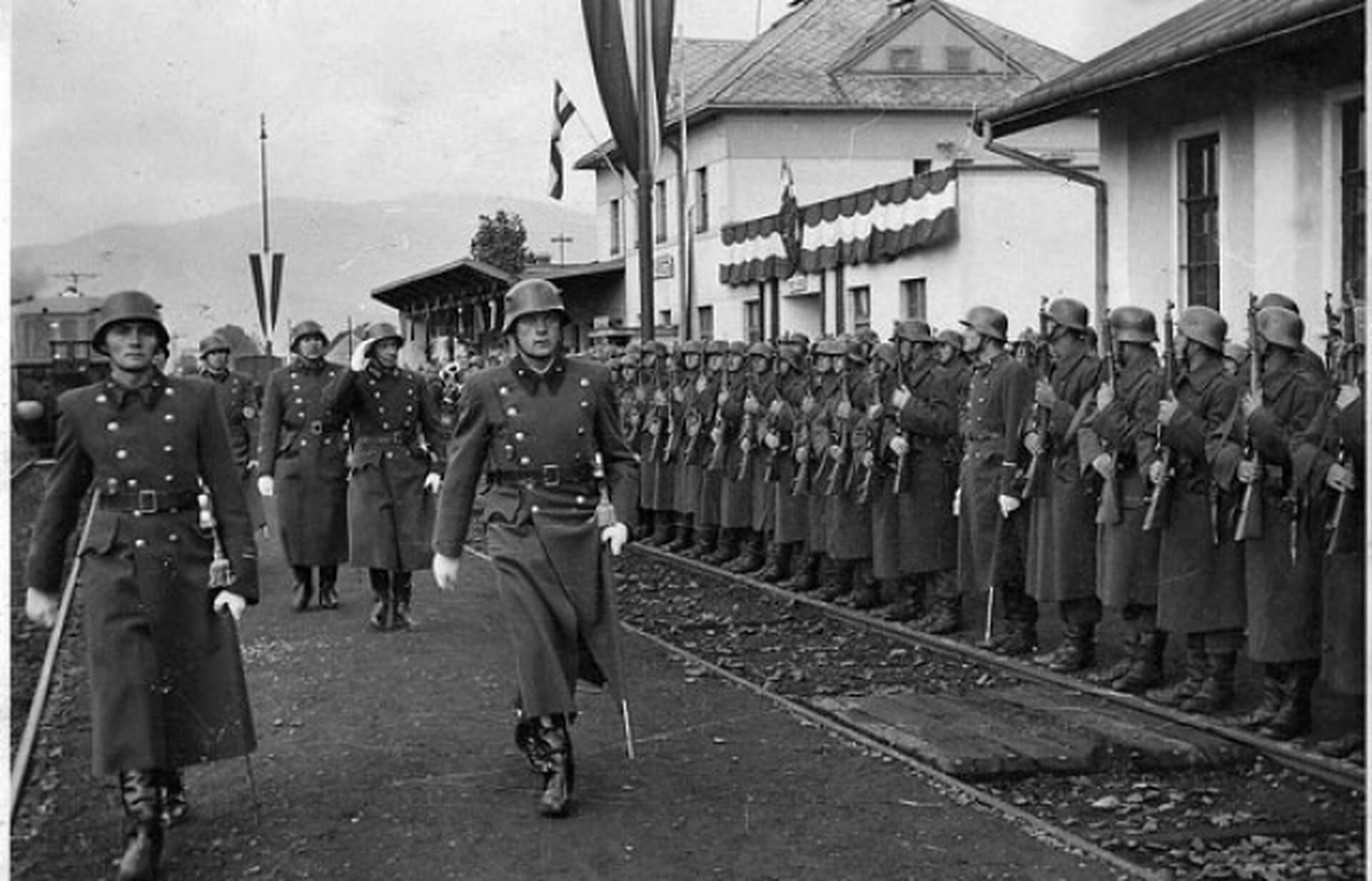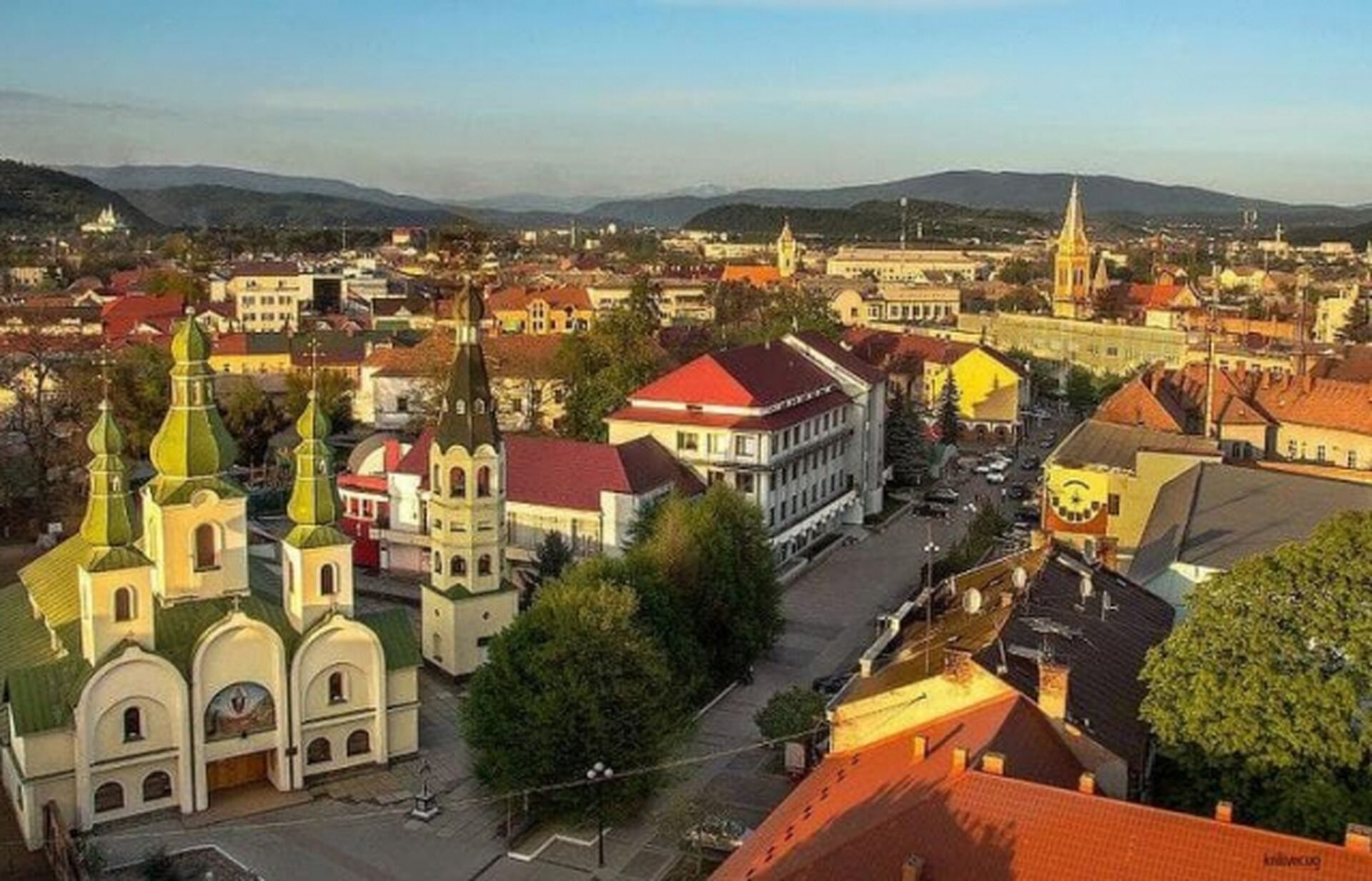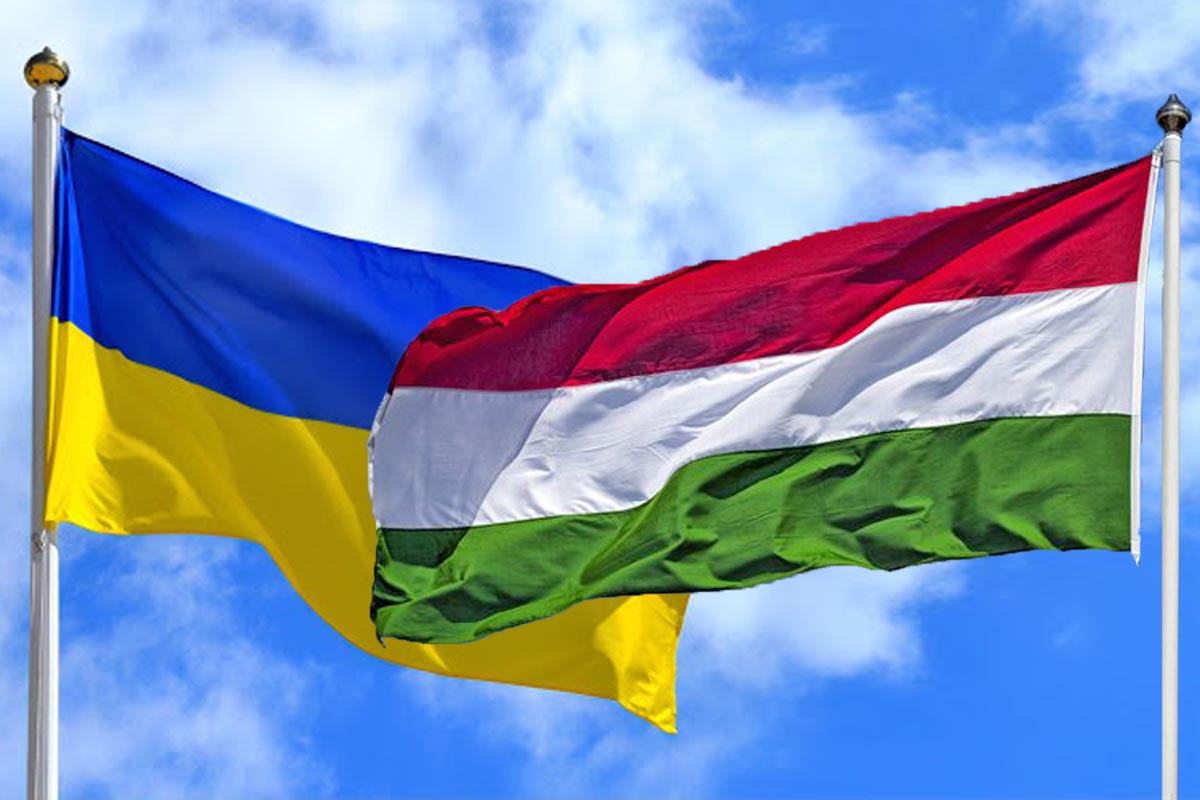“On May 9, 2025, the Security Service of Ukraine for the first time in history publicly declared a network of military intelligence of Hungary in the territory of Transcarpathian region. According to the SBU, the agent group collecting sensitive information about the military objects of the region, assessing the vulnerability of land and air defense, as well as the analysis”, – WRITE ON: ua.news
On May 9, 2025, the Security Service of Ukraine for the first time in history publicly declared a network of military intelligence of Hungary in the territory of Transcarpathian region. According to the SBU, the agent group gathered sensitive information about the military objects of the region, assessment of the vulnerability of land and air defense, as well as the analysis of behavioral scenarios of the population in the event of the introduction of Hungarian troops.
The task of intelligence was not only to spy, but also to loosen social stability – to create conditions for a possible destabilization of the situation in the region in the future. This actually proves that Budapest has moved from “soft power” to more active special operations in Ukraine.
The problem with Hungary and Transcarpathia has existed for the first year. However, for a long time, neither the authorities nor law enforcement officers, nor society preferred to notice it, fully concentrating on the Russian threat from the east. At the same time, the threat from the event did not go anywhere, and potentially the Transcarpathian region has every chance in the future to become a big challenge for Ukrainian unity and a test for reasonable and moderate policy on this region.
What are the historical prerequisites for the Transcarpathian problem, what is the cause of the conflict between Ukraine and Hungary and what conclusions need to be drawn? UA.news political observer Nikita Trachuk He understood the question.
Hungarian interest in Transcarpathia: Historical reasons
Transcarpathia is a strategically important region in the west of Ukraine, which has repeatedly changed state affiliation for the last few centuries. Is the edge in which, as if in the mirror, the complexity is displayed European history and the interests of different players are intertwined.
Hungary began to claim these lands in the Middle Ages, when they were part of the Hungarian Kingdom. After the accession of Transcarpathia to Austria-Hungary in the nineteenth century, the region gradually integrated into the political, linguistic and cultural structure of Budapest. This historical heritage has been preserved to this day: even more than a century after the collapse of the Budapest empire does not hide its influence on Transcarpathia.
In 1919, after the collapse of Austria-Hungary, Transcarpathia became part of Czechoslovakia in accordance with the Saint-Germen peace treaty. In 1938, after the Munich conspiracy, part of Transcarpathia was again handed over to Hungary. For a while, the region became independent, but in March 1939 it was completely annexed by Hungary. This status was maintained until 1944.
After 1945, as a result of the Second World War, Transcarpathia was transferred to the Ukrainian SSR, which enshrined a number of international agreements. Since 1946, the Transcarpathian region remains part of Ukraine: first of the Soviet and then independent.
However, since then, Hungary has never resigned to the final loss of Transcarpathia. More precisely, formally Budapest, of course, recognizes the territorial integrity of the Ukrainian state. There are no official claims to the region.
However, the Hungarian political thought, especially in the era of Victor Orban, is still influenced by revisive ideas, which is reflected in the concept of “Greater Hungary” – the image of the territorial unity of the Hungarian people within the pre -war borders. Therefore, Transcarpathia often appears in the Internal Hungarian political discourse as part of the historical heritage and as “original Hungarian lands.”

Transcarpathia in Ukraine: Hungarian minority as a factor of geopolitics
After Ukraine gained independence in 1991, Transcarpathia remained one of the most multinational regions of the state. By data All -Ukrainian census of 2001, more than 150 thousand ethnic Hungarians lived in the region, which accounted for more than 12% of the total population of the region.
In the border areas, in particular in Berehiv, Vynohradiv and Uzhgorod, the Hungarian minority lives compactly in separate settlements, preserving language, culture, traditions and close ties with the historical homeland. Many representatives of this minority have limited command of the state language, and some do not speak Ukrainian at all and do not understand it. Hungarian is actively used in everyday life, local media, educational institutions and even administrative communication in individual communities.
In some areas of Transcarpathia, a fully -friendly information environment is stored. Residents watch Hungarian television, read the Hungarian press, listen to fashion performers from Budapest and generally consume Hungarian cultural product. Everyone who visited Beregovo and the surrounding area was one hundred percent that everywhere, including the buildings of the authorities, Hungarian flags hung. It often caused misunderstanding and conflicts with local nationalists who They claimedthat foreign countries’ flags should not hang on the Ukrainian state bodies.
All this forms an alternative vision of both the past and the present. In particular, many Transcarpathians are very cool about the confrontation with the Russian Federation and believe that it is not their war, because they are closer to Hungary, which is in good relations with the Kremlin. This is indirectly confirmed by the fact that, according to the Ukrainian Ombudsman, the largest number complaints The shopping center comes from Transcarpathia.

Exacerbation of relations after 2014: language, passports and blackmail
After the Revolution of Dignity in 2014, Ukraine took a course to reformat statehood towards Ukrainianization, as well as for European integration. At the same time, reforms in the humanitarian sphere began to affect the complex and painful language issue. The adoption of the Law on Education in 2017, which envisaged the full introduction of the Ukrainian language in the educational system, caused a very rigid reaction from Hungary.
In particular, the Hungarian Foreign Minister Peter Siyarto called the law “a blow to the back” and the reconciliation of the rights of the Hungarian minority. Official Budapest announced The intention to block all the steps of Ukraine to NATO and the EU until the language issue is resolved in favor of the Hungarian minority.
In parallel, Hungary continued the “certification” policy, that is, the mass issuance of their passports to the residents of Transcarpathia. Long before 2022, at least 100,000 Hungarian passports (at 1.1 million population) were issued in the region, which is almost 10%. As of 2025, this figure reached at least 130 thousand – according to the official statistics of the Hungarian Ministry of Internal Affairs. In reality, this number can be bigger.
These situations indicate the strengthening of the demographic and political influence of Budapest. However, by recent moment he used only “soft power”. Now he has gone to spy and intelligence operations.

Hungarian position after a full -scale invasion of the Russian Federation
After February 24, 2022, when Russia began a full -scale aggression against Ukraine, Hungary officially joined the warning of the war and called for peace and respect for territorial integrity and sovereignty. However, in fact, Budapest has become one of the most unpleasant partners among EU countries for Kiev, and its position and rhetoric often cause sharp irritation and rejection both at the Bank and Society as a whole.
Yes, Hungary Accepted Tens of thousands of Ukrainian refugees, she sent us a humanitarian, joined anti -Russian sanctions, etc. It was also through the Hungarian territory that a large number of military assistance from other EU partners came from. However, at the state level, Budapest and country leader Viktor Orban continued to maintain close contacts with Moscow and Putin, constantly trying to block part of assistance to Ukraine and European integration efforts of Kyiv at the pan -European level.
Prime Minister Orban has repeatedly notedthat Ukraine should not be a member of the European Union and NATO, and that it will do everything to prevent it. Hungary blocked the funding of military assistance to Ukraine from the EU Fund, and delayed the approval of key political decisions of the European Council, appealing to the need to “protect the Hungarian community”. And the Hungarian pro -government media often broadcast the abstracts about discrimination against Hungarians in Ukraine.
In general, Victor Orban’s policy is increasingly reminiscent of Vladimir Putin’s behavior. In some sense, the Hungarian leader copies the Putin model: both in government and geopolitical rhetoric.
Both leaders are clear autocrats, except that Hungarian autocracy, of course, is much more civilized and “European”. Both exploit historical myths about the “great powers”, appeal to the protection of “their people” abroad and use ethnic minorities as a tool of foreign policy. Orban has created a semi -authoritarian regime in his country with controlled media, repression against opposition and political nationalism with uncovered Euroscepticism – like Putin, simply on a much smaller scale and not so radically. In doing so to get out of the EU or give up financial subsidies For some reason, Budapest is in no hurry.
Hungary, led by Viktor Orban, turned into a “Trojan horse” within the EU. Formally, the country remains part of European institutions, but it seems to be systematically working for a collective unity. The Hungarian leader himself calls his policy “sovereign” and “nationally oriented”.

At the same time, unlike Russia, Ukraine is not in the open war. Fortunately, conflicts remain purely diplomatic. This leaves a chance for constructive dialogue, although its capabilities are now limited.
Summarizing: Ukraine today deals not only with Russian direct military aggression, but also with hybrid and in some places frankly insidious policies of Hungary. Transcarpathia became the field of indirect conflict, where the ethnic issue is used as a tool of influence, and the protection of the Hungarian language – as a cover for spy activity and preparation of possible destabilization. Victor Orban’s policy challenges Ukraine’s territorial integrity, and this threat should not be ignored.
However, you should not respond to such things too emotionally. How many states exist, there are so many conflicts between them. How many intelligence and other special services exist – so much they are engaged in espionage and data collection in other countries. Actually, it’s their work, and it would be strange to expect something else. In the end, how many autocratic leaders with neo -imperial ambitions exist – so much they exploit the topics of protection of “our people” anywhere, except for their own country.
Therefore, it is necessary to respond to the “Transcarpathian problem” with Hungary calmly and carefully. First of all, diplomatic levers and constructive dialogue are required. This should intensify counterintelligence and political and legal instruments. Ukraine should also clearly formulate a position, requiring a honest game and the same standards for all. For example, in the framework of solving the issue, you can agree on the joint creation of schools: Hungarian in Ukraine and Ukrainian in Hungary, which is partly partially is going on.
Kyiv needs to increase the presence of the state in Transcarpathia, develop local infrastructure, invest in the region, keep a dialogue and maintain loyalty of the population. At the same time, it is important to continue communicating with the EU to prevent Hungary’s further attempts to block our European integration.
Transcarpathia was, is and will remain part of Ukraine. But for this, the state should be ready to counteract any form of external influence, in parallel, improving its own image in the eyes of the Transcarpathians, but decisively ceasing Hungarian encroachment.
